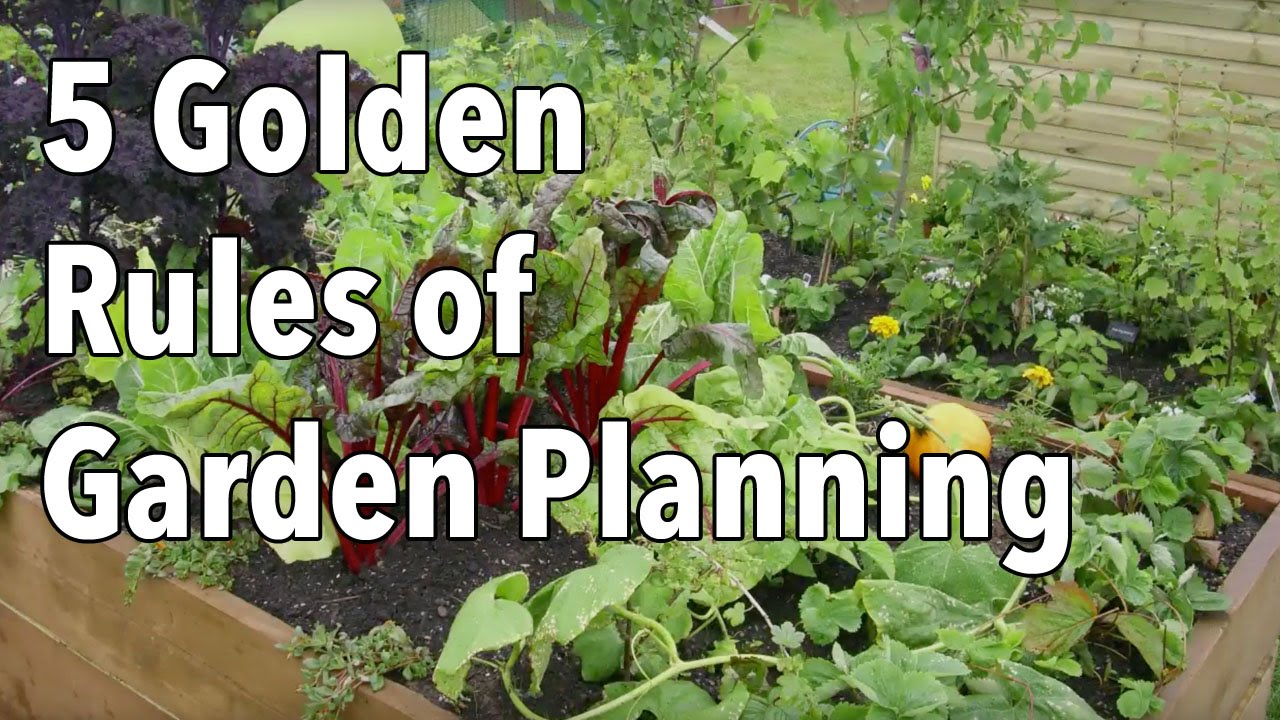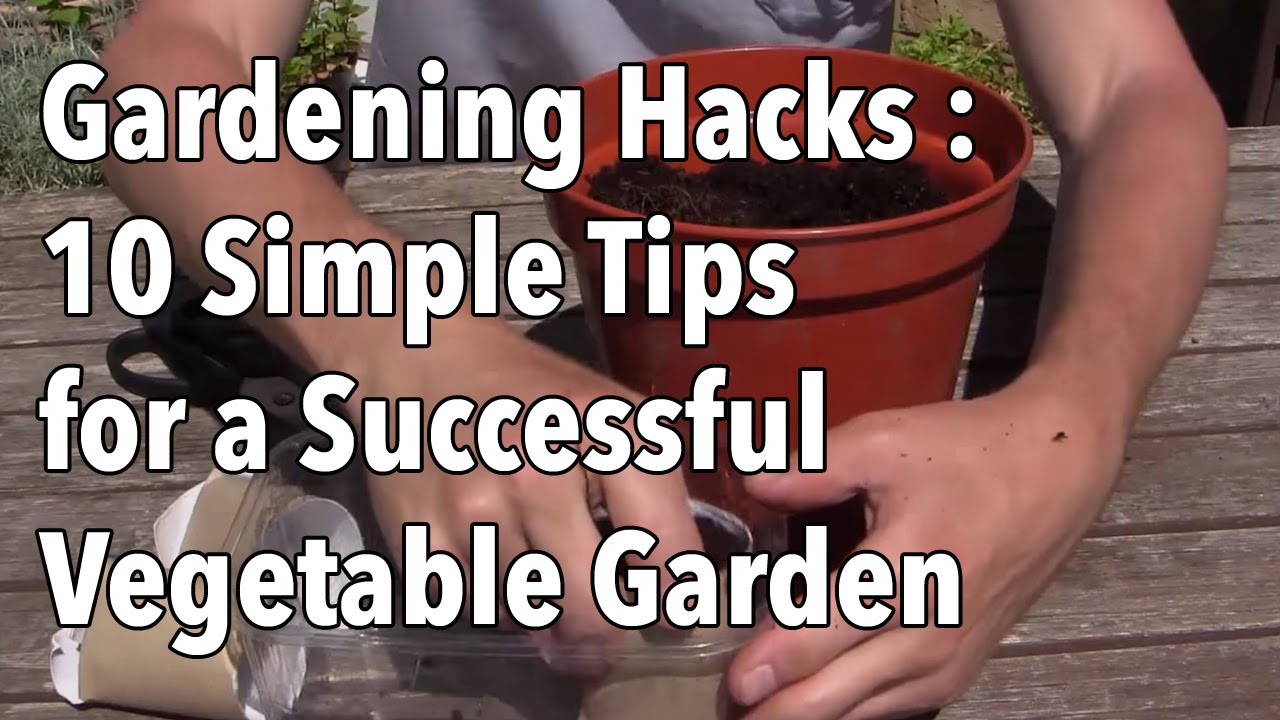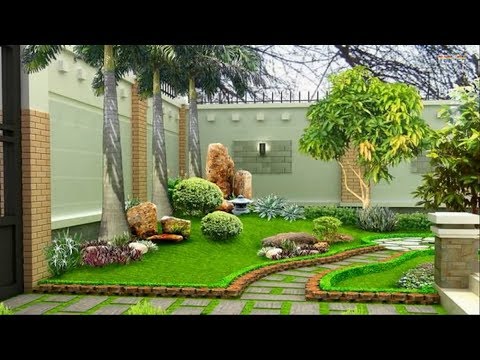[Music] For many of us, the prospect of a new growing season signals a fresh start and the opportunity to grow our best harvests ever. But success isn’t guaranteed. Follow our 5 golden rules to garden planning and you’ll stand the best chance of reaping the bumper yields that you deserve. Enjoying success with vegetables starts with picking the right location to grow them in. Most vegetables prefer full sun, which encourages strong growth and resilience to pests and diseases. If you haven’t got anywhere in full sun then grow crops that can cope with shade such as leafy salads and greens.
Cool season crops like peas will benefit from summer shade in hot climates. Good soil is the foundation to any successful garden, so make sure the ground your vegetables grow in is fertile and moisture-retentive, yet well-drained. You can improve any soil type by adding well rotted compost which can be dug in, or left on the soil surface between your crops. It may seem obvious, but there’s little point in growing what you don’t like. Concentrate on those fruits and vegetables you enjoy eating, and you’ll be motivated to keep your crops in good condition and see them through to harvest. By growing your own you can also place your emphasis on flavor, choosing varieties that promise exceptional taste and quality. Where space is at a premium, consider directing your growing ambitions towards those crops that are especially prolific or expensive to buy, including most herbs, fruit, leeks, zucchini/courgette, and climbing or pole beans. Many types and varieties of fruits and vegetables are well suited to growing in containers. Miniature varieties of vegetables, naturally compact salads, and tree fruits grown on dwarfing rootstocks can all turn an empty terrace or balcony into a produce-packed paradise as long as they’re kept well-watered in summer.
You can use our Garden Planner to maximize the use of garden space. The Planner will show you exactly how many of each vegetable or fruit you can grow within the space available to you, without overcrowding them. Selecting a crop couldn’t be easier. Simply scroll through the selection bar, then click to pick up a crop Move the cursor to your plan, then click and drag to place. The software automatically calculates how many plants can be grown in that area. Click on the accompanying plant list to see the exact numbers of plants required for each crop making sowing and planting accurate and predictable. Don’t let your kitchen garden get ahead of you! Some vegetables require more work than others, so if you haven’t got much time choose vegetables that are easy to grow. For instance, perennial herbs require little maintenance once they’re established, and can be picked when needed. Pay attention to the descriptions of varieties, and opt for those that are suited to your growing conditions and the time and resources you have available. Pest and disease resistance is worth seeking out if you’re after an easier time.
Locating your vegetable garden nearer to the house will make it easier to tend and harvest, while pots of regularly-used herbs can be positioned right outside the back door. Most crops need watering in dry weather, so make sure there’s a water source near to your garden. Install additional water barrels to collect rainwater from greenhouse or shed roofs. Paths between beds should be wide enough for a wheelbarrow while beds should be of the right proportions for easy maintenance and crop rotation. The Garden Planner can help you to lay out your garden like a professional. Layout the position of paths, beds and containers…
Include vital garden objects such as compost bins and water barrels… and mark the location of growing aids, for example irrigation lines and plant supports. Stagger your harvests and enjoy home-grown produce for longer. Quick-growing crops such as radishes can be sown little and often to spread harvests out. Prolific croppers such as climbing beans, chard and zucchini/courgettes should be picked little and often to encourage more produce to follow. With a little careful planning, one crop can be followed immediately with another so that the ground is continually occupied and achieving its full potential. The Garden Planner is a powerful tool to help plan this type of succession cropping. By viewing your plan in a particular month, you can see where and when gaps appear. You can then click the Custom Filter button to show only crops that can be sown or planted in that same month. Now choose any of the filtered crop choices to fill the gaps in your plan. How easy was that!? These rules may be simple, but they’re incredibly effective at improving results.
If you have a must-follow rule that you garden by, please share it by dropping us a comment below. You can also watch our other videos for plenty more planning tips, and don’t forget our upcoming videos either. Subscribe to our video channel and enjoy regular new gardening videos as soon as they’re uploaded. I look forward to catching you next time. [Music].





